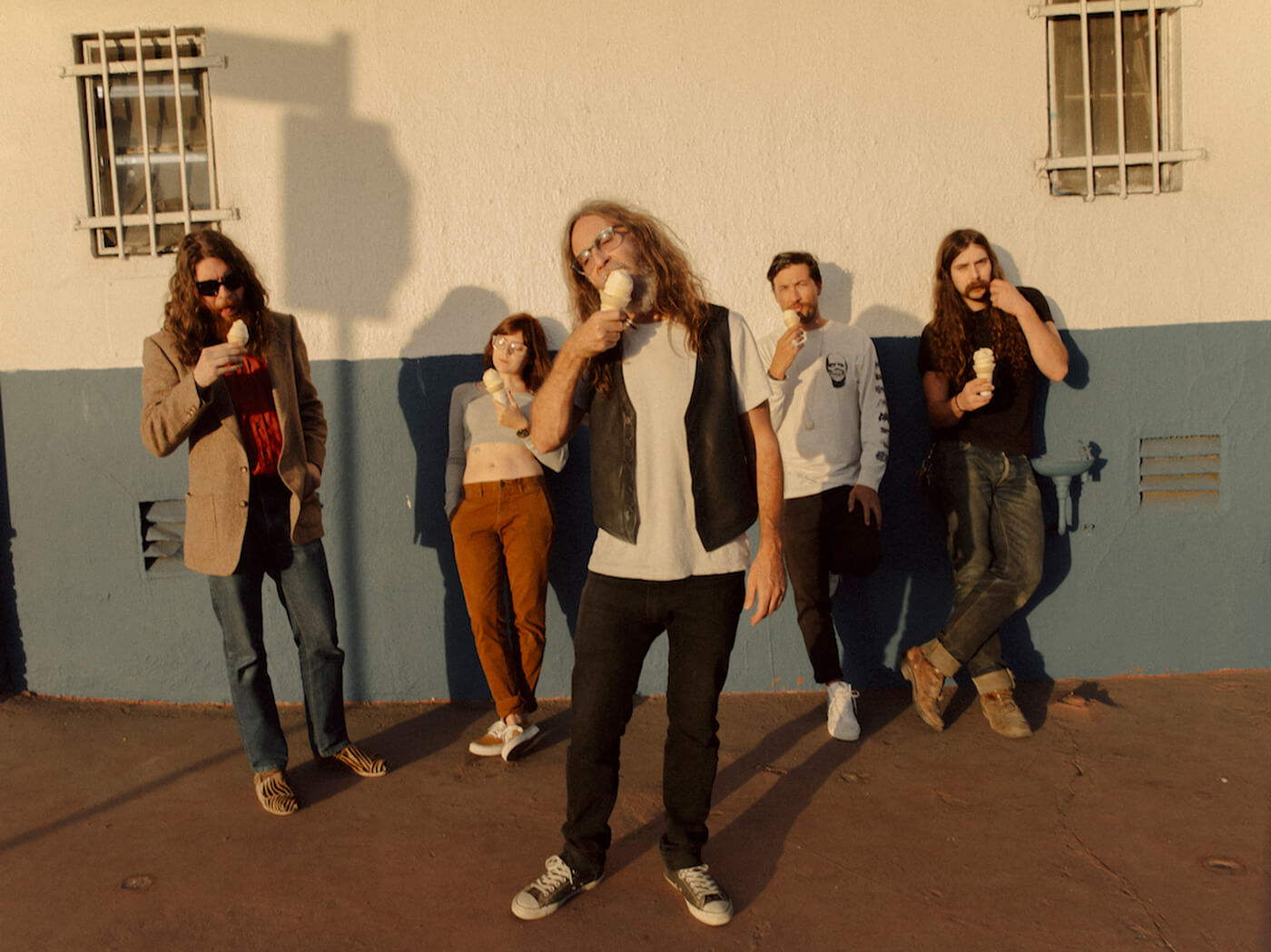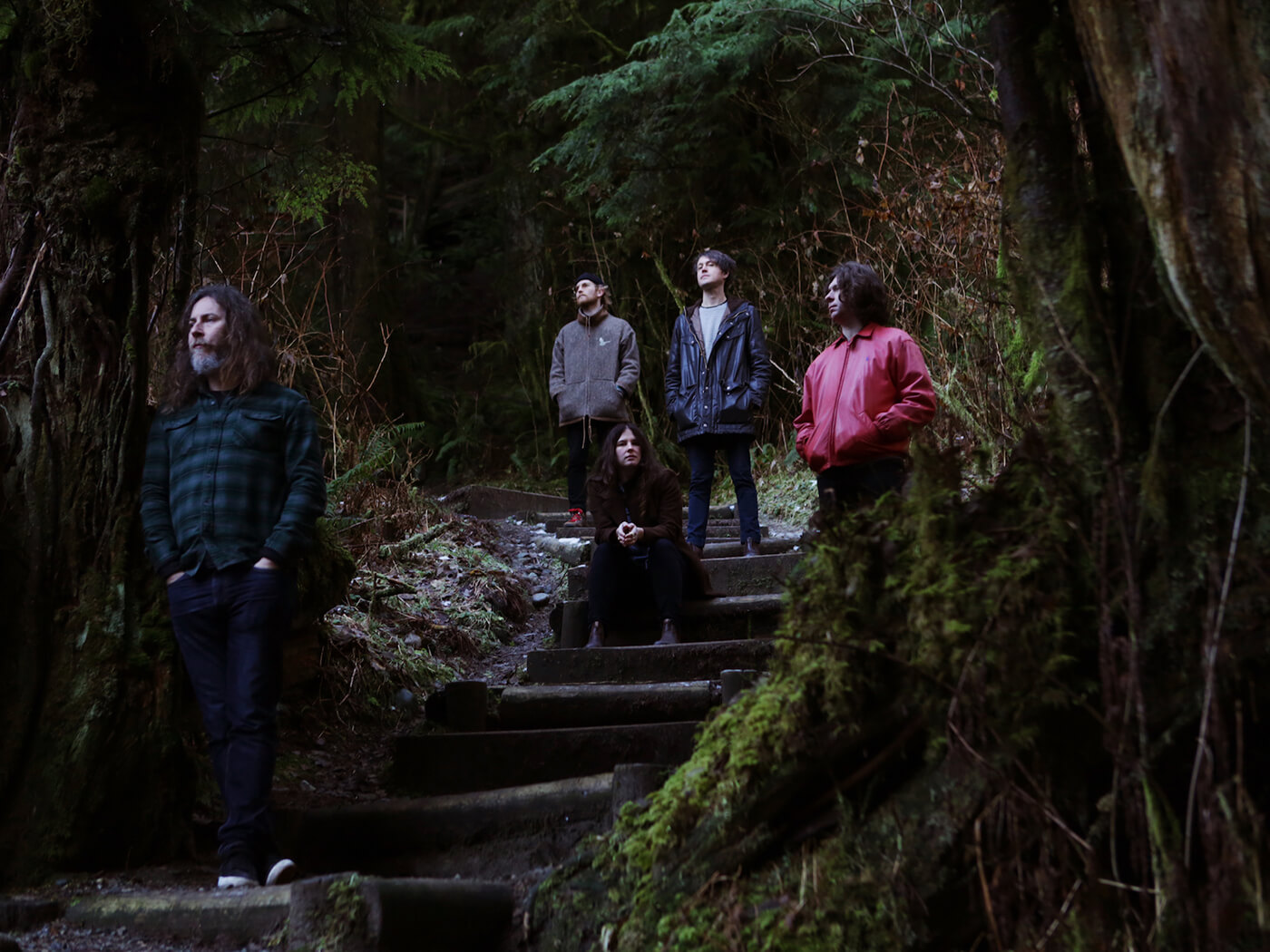Black Mountain’s latest album puts the pedal to the metal
Stephen McBean talks Destroyer and his undying love for gear.

Image: Olivia Jaffe
If you’re about to give Black Mountain’s latest record a listen, we recommend doing so while in your car, with the windows down and the volume cranked all the way up.
Titled Destroyer, the band’s fifth studio album is named for a mythical muscle car and takes you on quite the journey. It goes from tracks like Pretty Little Lazies and Boogie Lover that’ll send you through meandering back roads, to high-octane anthems like Licensed To Drive that’ll make you reach for the gear change – best left for the highways.
Given the significant personnel change Black Mountain have experienced of late, this album is truly a statement from the band. We recently caught up with co-founder Stephen McBean to find out more about the creative process behind Destroyer, and his love for all things gear.
Why did you decide to name the album after a muscle car?
When we began the search for a title, me and Jeremy [Schmidt, the keyboardist] decided early on that we wanted a “one-word” title in the same vein as classics like ZZ Top’s Eliminator and so on. We riffed back and forth between a bunch of different names. There was “Mutilator”, “Decapitator” and all these different things, then it became apparent when the album was taking form that it’s a muscle car album.
The car became the muse for the record – the thrill of listening to music while driving and the mood of the music affecting your driving. In creating the record, we would make rough mixes of the songs, take them out and drive around in the car with the windows rolled down and the music cranked up, to see how they felt.
Going in this album, did you know exactly what you wanted in terms of guitar sound?
No. We recorded the record ourselves, so it left us a lot of time to experiment with tones. Once we recorded the bed track, when I was doing the guitars, I set up a whole lot of amps in a room. I had my ’73 Marshall Super Bass, a HiWatt Half Stack DR104 and a Fender Super Reverb from the early 70s. I also had a Supro Thunderbolt from, I think, 1966 and a bunch of other little amps: Silvertones, Fender Champs and stuff.
I would set up three or four amps and I would play along to the bed track of the drums and kind of dial those in. Mic and turn them up, maybe throw some pedals on the floor, and figure out what may work and what may not. I did that for a while and it was quite exhilarating – especially the HiWatt and the Marshall, because that was a lot of volume.
I would just record a lot and weed through it, mute some stuff and pick the track that sounded best. I did a lot of research, looking at old photos of records being made and what amps and guitars they were using and where they were putting the mic.
So there’s a bit of experimentation with close micing and room micing and checking the phase between mics. It’s quite a process but it was a good learning experience.
Was that experience producing this album any different from what came before?
Yeah, I’ve never really produced a Black Mountain record on my own before – there has always either been someone else producing it or we’re all kind of co-producing it. On this one, I did all the tracking for everything up to the keyboard and then did the vocals. Then went through that with Jeremy and we ended up recording like 22 songs.
It was nice to have control of the range. Sometimes you’ve got to trust your gut. It’s nice to bounce ideas back and forth off someone, but it’s also nice to just follow it through [on an idea] to the very end and then decide whether it works or not. When it works, I feel pretty good about it.

There aren’t any longer songs on this album, like the previous ones. Was this a conscious decision?
A little bit. We wanted to make a single album – a more concise one – not a double record. But we also wanted to have a good number of tracks on it. Sometimes we go through phases where we like the really long, drawn-out epics but we also like making something more concise.
Black Mountain’s line-up shuffled a bit for this album. What was it like working with the new personnel?
It was fun. The initial shock of people leaving the band was, of course, sad but then Jeremy and I decided pretty quickly that we wanted to try to continue as a band. We still had more to say or to give the world under the Black Mountain moniker.
So once we decided we wanted to continue, then it became a question of how to continue. We figured the best way was to just start making a record with everyone that plays on other bands we know, people we’ve met on the road and concerts and stuff. They’re all part of the family.
I just started recording and when people would come to town, I’d show them some songs and we’d jam on it and then we record until [the album] was made. It’s quite similar to the way the first record was made.
What are your main guitars right now?
I have a 1976 Gibson Les Paul Custom, with the blonde natural wood finish – it has that Mick Ronson vibe [laughs]. It has got some 80s Super Distortion pickups in there or something. I’m not exactly sure what they are, but it has a lot of non-stock stuff in it. It was cheaper than if it had been all original [parts] but it’s great. It weighs a tonne and it sounds really good.
And then I’ve got an ’87 Gibson SG that’s kind of a ’61 reissue with – I think – a Lollar P-90 in it. That one’s good. Real cool. Its neck has been broken a few times on flights and stuff, but I glued it back together [laughs].
I’ve also got one of those Squier J Mascis Jazzmasters – I put in Lollar Jazzmaster pickups on that one. I also put in some kind of 50s wiring configuration. That’s a really fun and easy guitar to play.
Recently, I’ve been using this guitar that I got from Fender. It’s the Yngwie Malmsteen Stratocaster with the scalloped frets. That’s got the Yngwie Fury pickups in it. It’s a really cool guitar, but it’s a little hard to play live because of the scalloped frets. It’s really fun to just sit on the couch and move around on it. It’s harder with the scalloped frets if you’re playing down by the nut, like standard chords and stuff, but the pickups in it are really amazing.
And then just a while ago for my birthday, I found a [NJ Series] BC Rich Mockingbird from ’84 in a cream colour. It’s great because I had a BC Rich – I think it was the Eagle – when I was much younger. I loved that [the Mockingbird] has kind of a Les Paul neck, but a little rounder. It’s just a bolt on one – the neck-thru ones are very expensive now. It’s got a Seymour Duncan Super Distortion pickup in the bridge, which is pretty cool sounding. I’ve got a few others but I don’t use them live. I’ve unfortunately had a bunch of guitars stolen, too. That was a drag.
How do you achieve your noise? Is it through the amps or the effects?
It depends on the size of the club. It’s really hard to get that Marshall [Super Bass] up into the seven or eight on the master volume. Usually for live shows, it’ll be the Marshall with an overdrive, a fuzz pedal and a wah. But in the studio, it’s cool because you can baffle that amp off and l put it on 10 so you don’t really need any overdrive or anything. I love pedals, they’re so fun, but also sometimes I like to just play straight into an amp to try and get the most out of the volume and tone controls.
What are your favourite effects pedals right now?
I’ll always love the Boss [SD-1] Super OverDrive – the little yellow one that’s like 45 bucks [laughs]. I’ve tried so many different boutique overdrives and that one just sounds really good with a Marshall. It adds that little bit of extra crunch.
I also really like the Maestro Echoplex. It lightly smooths out the high-end of the Marshalls. Just that touch of that top end presence, which sometimes is ear-shattering. I did play with a bunch of the Eventide effects on this record, that was cool. Some of the guitar synths and the harmonisers, like the old state-of-the-art one from the 70s. They definitely have some pretty cool effects on those.
Destroyer is out now via Dine Alone Records.
